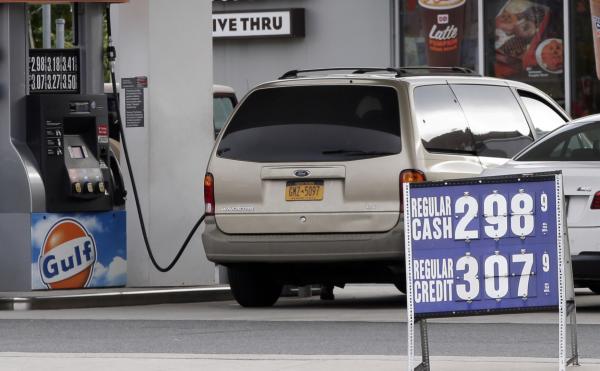
Aug. 1 (UPI) — Peak summer demand and declining levels of supplies, both domestic and foreign, mean spikes in the price of gas for U.S. consumers, market analyses find.
Motor club AAA reports a national average retail price for a gallon of regular unleaded gasoline at $2.32 for Tuesday, up a fraction of a percent from Monday and 1.75 percent, or 4 cents per gallon, higher than last week. All but three states reports hikes in the price at the pump during the last week.
The official summer driving season is nearing a peak and domestic inventories are moving lower, which means higher gasoline prices for the near future, AAA spokesperson Jeanette Casselano said in a statement.
“As summer moves forward, the days of dropping summer gas prices appear to be behind us for now,” she said. “U.S. crude inventories are moving in the opposite direction of demand – a perfect storm for continued price increases heading into August.”
A July forecast from the U.S. Energy Information Administration put the average price per gallon for the summer driving season, which runs through September, at $2.38, about 7 percent, or 15 cents, higher than the average last summer.
The West Coast market is the most expensive in the country, with California holding the distinction as the state in the Lower 48 with the highest price at $2.94 per gallon, but were also more or less stable compared with last week. In its weekly retail market report, AAA found supply and demand were in check, as a breakdown at a Phillips 66 refinery was offset by a 200,000 barrel jump in gasoline inventories in the market.
The Great Lakes market is the most volatile and AAA reports a 26 cent jump in prices from last week in Indiana. A 9 cent spike in the price of gas in Michigan, meanwhile, made it the seventh most expensive in the country. AAA said regional gasoline inventories declined 300,000 barrels, adding “low inventory and high demand will likely result in continued increases over the coming weeks.”
Patrick DeHaan, a senior petroleum analyst with price-reporting company GasBuddy, said crude oil prices back above $50 per barrel isn’t helping
“August will likely feature the summer’s highest gasoline prices,” he said in a report emailed to UPI.
Saudi Arabia is cutting oil production further in order to help address lingering strains for an over-supplied market. Political issues in Venezuela, meanwhile, have added some psychological pressure because it’s the third largest supplier of oil to the United States.





